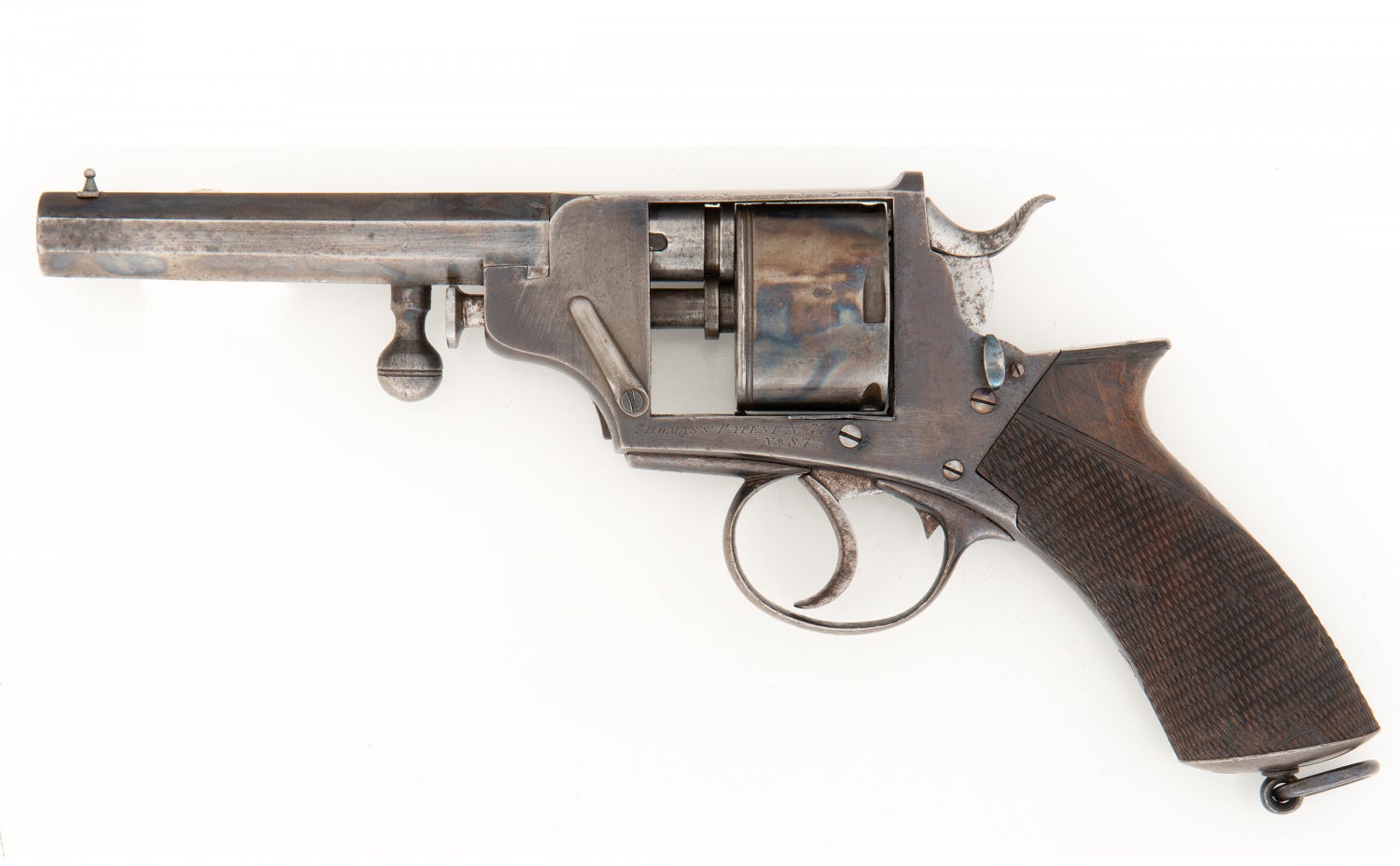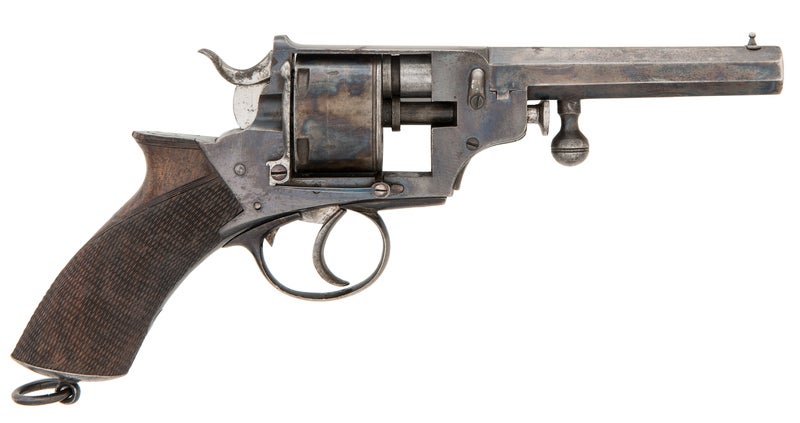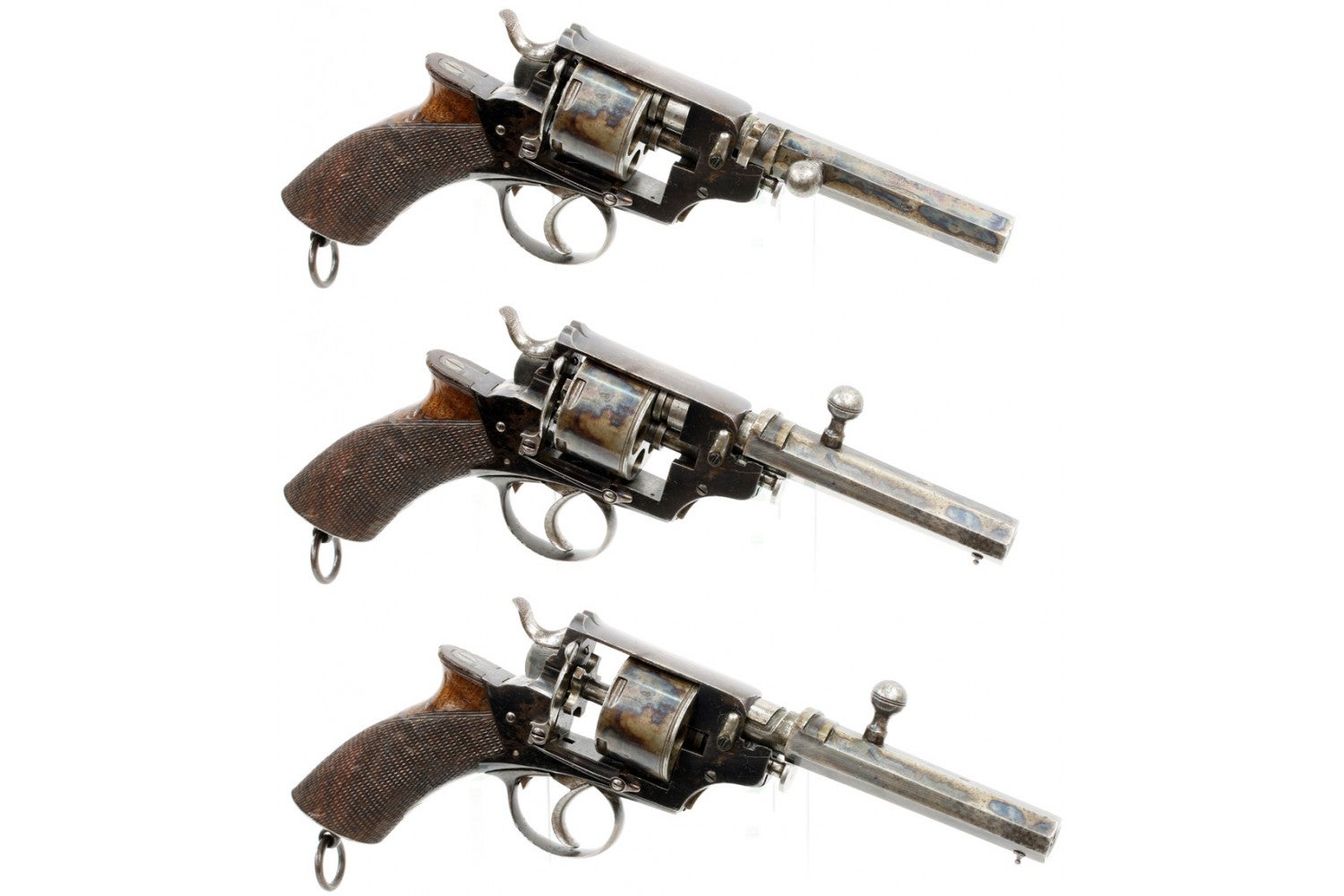What do you get when you combine a bolt action with a revolver? The Thomas Patent Bolt Action Revolver
Sometimes, combining two types of operation works out well. The Benelli M3, for instance, is both a pump-action and semiautomatic shotgun. The IWI Tavor TS12 is both a revolver and a semiautomatic shotgun as well. In 1869, an enterprising gunsmith, J. Thomas, was working for the Birmingham, England firm of BSA (Birmingham Small Arms Company, LTD). The British small arms industry was experiencing at the time a wave of different ideas and implementations of how to swiftly unload and reload revolvers, most prevalently using the “tip up” system.

Thomas Patent Bolt Action Revolver. Image Credit: College Hill Arsenal
Perhaps inspired by the recent wave of bolt action rifles such as the Dreyse, Chassepot, and the Palmer, Thomas invented a quick-eject, bolt action revolver, and was granted British Patent 779/1869. Thomas’ idea centered around harnessing the revolver’s cylinder to a bolt action barrel. His revolver was mostly produced by the majority stakeholder in BSA, which was Tipping & Lawden. Therefore, most revolvers of this type encountered today bear the marking of Tipping & Lawden and not BSA.

Thomas Patent Bolt Action Revolver. Image Credit: College Hill Arsenal
Thomas patent revolvers were double action and most commonly produced in .45, .44 and .38 caliber. They had six-shot cylinders, 7-groove LH rifling, and .44 caliber models weighed 4.25lbs/1.93kg.
How it works
To eject the cases, one would rotate the bolt 180 degrees vertically. A cam on the frame would simultaneously pull the cylinder forward while the star extractor would stay stationary. The cam would cause the cylinder to come forward rather rapidly, and this force was purported to extract stubbornly stuck cases.

Thomas Patent Bolt Action Revolver. Image Credit: College Hill Arsenal
The maximum forward position of the cylinder in relation to the extractor allowed unfired cases to remain in the cylinder via the unfired bullets, but all empty cases could be shaken clear. Granted, one would have to manually extract a misfire, but still, a quick system for its day, and one that allowed the frame to retain strength versus a tip-up or down revolver. The Thomas bolt action revolver also had a swing-down loading gate on the right-hand side for conventional loading.

Thomas Patent Bolt Action Revolver. Image Credit: Guns International
What became of it?
In the cut-throat world of British gunmakers of the 1800s, the Thomas revolver fell victim to the success of Tipping & Lawden. T&L attracted the attention of Webley and were acquired by them in 1877. Webley then ceased production of many of the more uncommon T&L designs, including the Thomas revolvers. Produced in small numbers, the Thomas revolvers are relatively rare and examples found today can command decent prices in the low four figures on the antique market.
What do you think, readers? If a modern bolt action revolver came to market with a 50-degree bolt throw, combined with an extractor/ejector that kicked the cases clear of the revolver without the need to shake it, would you be interested? Let us know in the comments.

Thomas Patent Bolt Action Revolver. Image Credit: Guns International
For more weird, wacky and wild wheel guns, be sure to come back to TFB for more installations of Wheelgun Wednesday.
 Your Privacy Choices
Your Privacy Choices
